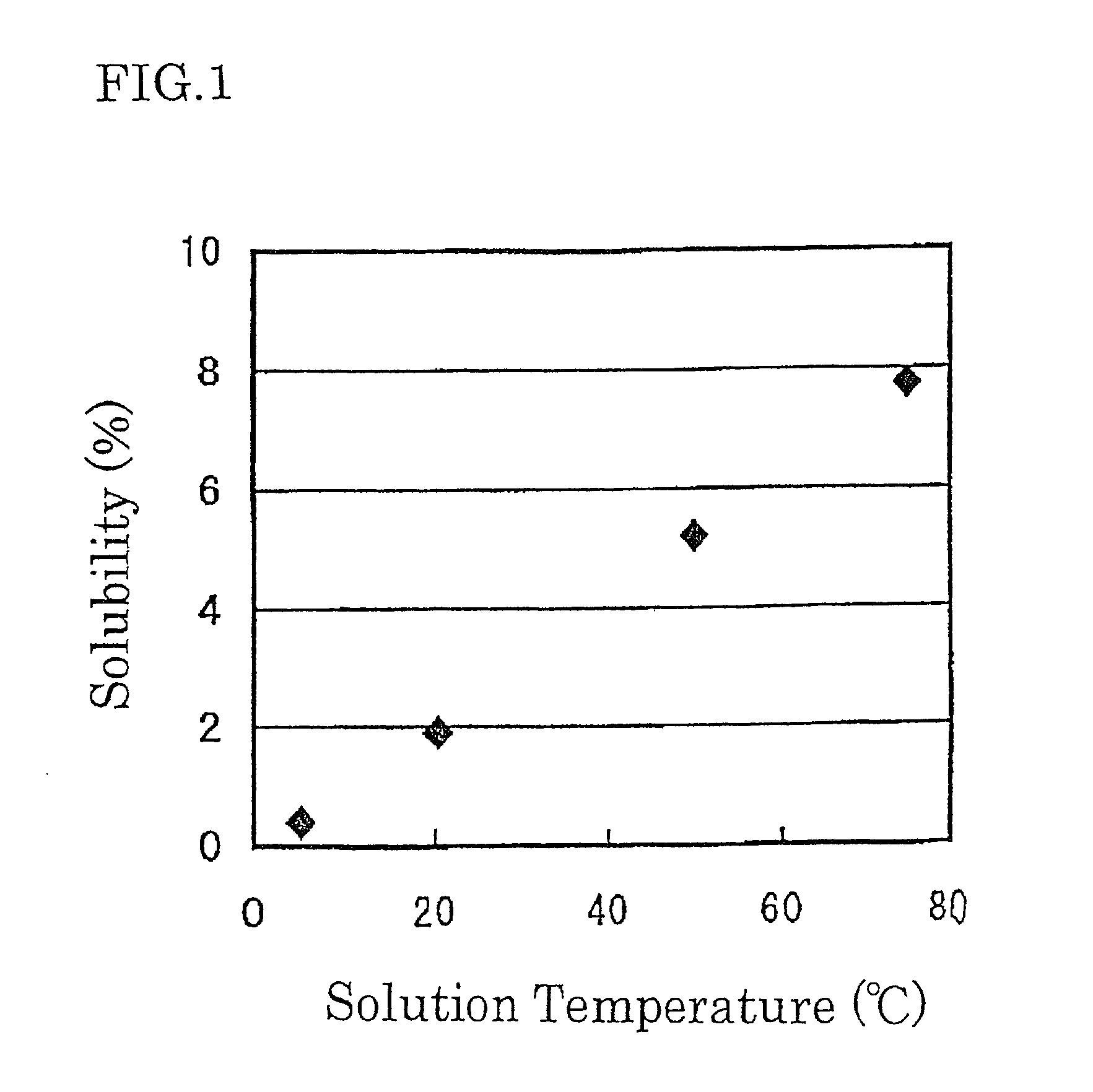Anticorrosive treating concentrate
a technology of anticorrosion and concentrate, applied in the direction of other chemical processes, electrical equipment, chemistry apparatus and processes, etc., can solve the problems of reduced circuit response speed, reduced wiring life, oxidation, corrosion, etc., and achieve the effect of stably carrying, stably stored there, and supplied stably
- Summary
- Abstract
- Description
- Claims
- Application Information
AI Technical Summary
Benefits of technology
Problems solved by technology
Method used
Image
Examples
example 10
[0077]The anticorrosive treating concentrate containing 3% of BTA, prepared in Example 3 was placed in a container at an atmospheric temperature of 17° C., then carried to a cold district having an atmospheric temperature of 0 to 5° C., and allowed to stand at that temperature for 3 days. As a result, there was no suspension of fine BTA particles or no cloudiness in the container, that is, there was no precipitation of crystals.
example 11
[0078]The anticorrosive treating concentrate containing 3% of BTA, prepared in Example 3 was diluted with water to prepare two kinds of cleaning solutions each containing 0.3% or 0.07% of BTA.
[0079]Separately, a semiconductor substrate having copper wirings formed by a damascene process was subjected to CMP to produce a wafer having a polished copper surface.
[0080]The polished copper surface stained with an abrasive and a polishing residue was cleaned by an ordinary method of spraying each of the above-prepared cleaning solutions. Then, the cleaned copper surface was observed using a optical microscope. As a result, the surface was very clean. Thus, the anticorrosive treating concentrate according to the present invention is effectively usable as a cleaning solution for wafer. Further, there was no sticking of precipitated particles to the surface of semiconductor substrate.
example 12
[0081]The wafer having a cleaned copper surface, obtained in Example 11 was stored by immersing it for 1 day in the anticorrosive treating solution containing 1% of BTA, prepared in Example 6.
[0082]Then, the wafer was taken out from the solution into the atmosphere, cleaned and dried, after which the copper surface was observed using a optical microscope. As a result, there was no change in surface cleanness and there was no surface deterioration such as formation of oxide film. For comparison, the wafer having a cleaned copper surface, obtained in Example 11 was cleaned, dried, and allowed to stand in the atmosphere for 1 day; a thin oxide film was observed on the surface.
[0083]Thus, the anticorrosive treating solution of the present invention can be used as a preservative solution of immersion type for copper surface.
PUM
| Property | Measurement | Unit |
|---|---|---|
| Percent by mass | aaaaa | aaaaa |
| Acidity | aaaaa | aaaaa |
| Fraction | aaaaa | aaaaa |
Abstract
Description
Claims
Application Information
 Login to View More
Login to View More - R&D
- Intellectual Property
- Life Sciences
- Materials
- Tech Scout
- Unparalleled Data Quality
- Higher Quality Content
- 60% Fewer Hallucinations
Browse by: Latest US Patents, China's latest patents, Technical Efficacy Thesaurus, Application Domain, Technology Topic, Popular Technical Reports.
© 2025 PatSnap. All rights reserved.Legal|Privacy policy|Modern Slavery Act Transparency Statement|Sitemap|About US| Contact US: help@patsnap.com


